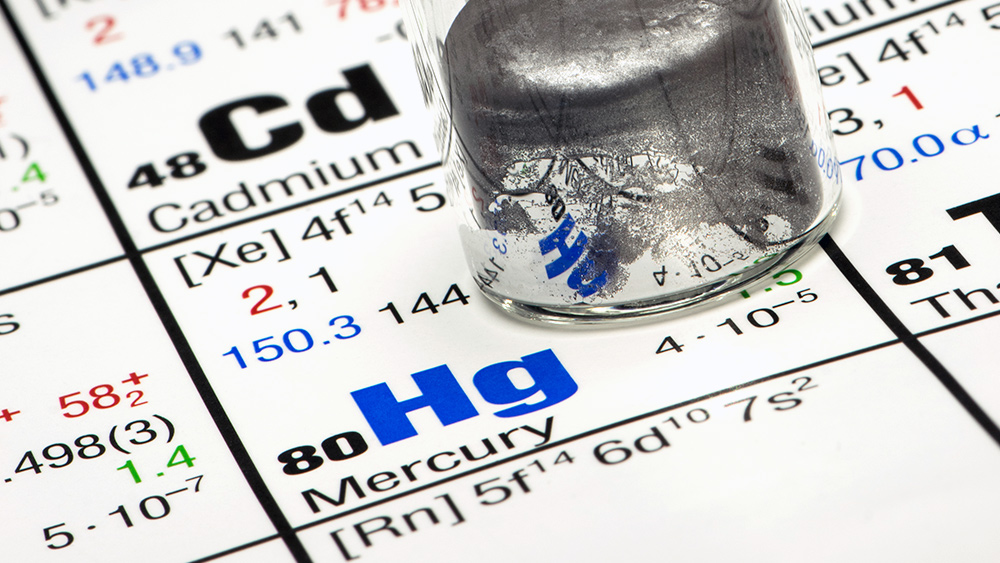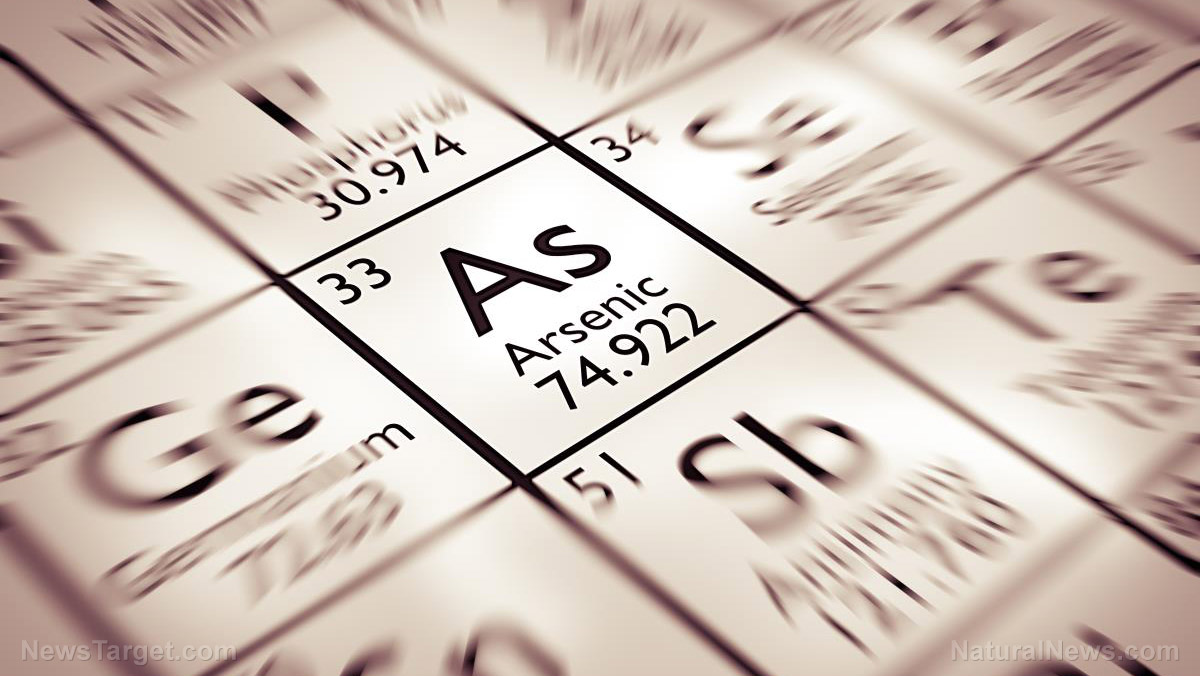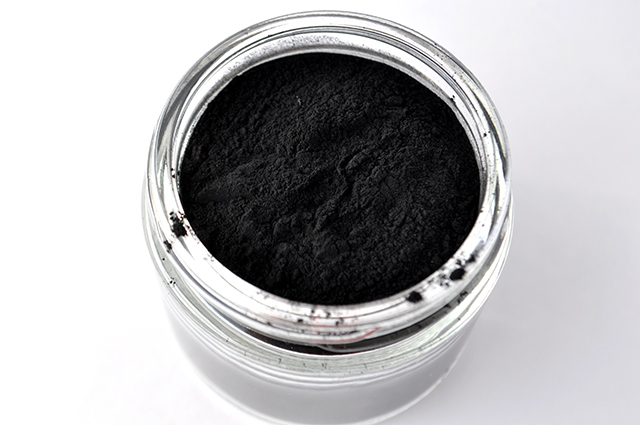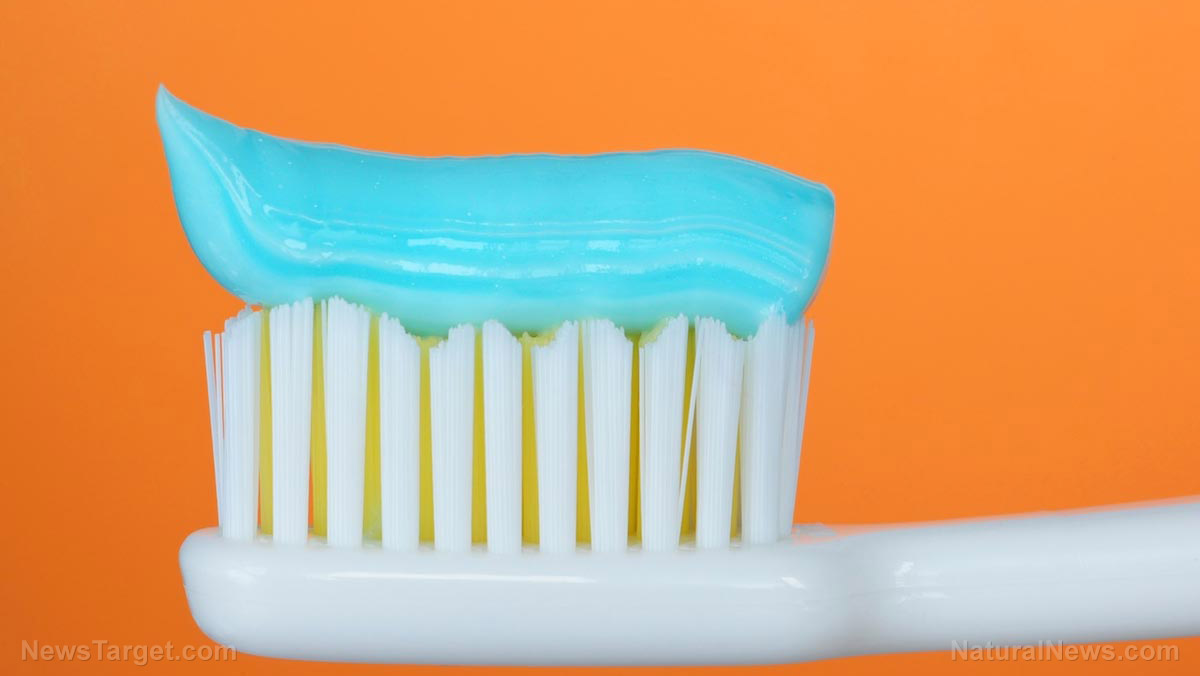Mercury poisoning signs and symptoms
09/29/2018 / By Rhonda Johansson

Mercury may be a naturally occurring metal but it is a deadly neurotoxin that can lead to numerous health issues and even cause death. The World Health Organization (WHO) considers the heavy metal to be one of the most dangerous group of chemicals and is, according to the group, a “major public health concern.” Mercury can exist in three forms: elemental (or metallic), inorganic, or organic. The most common way people are exposed to the metal is by ingesting fish contaminated with methylmercury, the organic version of the compound.
All humans are exposed to mercury in one form or another. A 2004 Centers for Disease Control and Prevention (CDC) analysis of blood mercury levels in young children and childbearing-aged women found that all participants had trace amounts of methylmercury in their system. While the amounts were low enough to not contribute to any detrimental effects, the group does warn that their data unquestionably shows the prevalence of organic mercury in our society. Acute or high exposure to this form of mercury can lead to several symptoms, including:
- Loss of peripheral vision
- Lack of coordination in movements
- Muscle weakness
- “Pins” and “needles” feelings in the hands, feet, or around the mouth
- Speech, hearing, or walking impairments
Methylmercury exposure can affect fetuses as well. The U.S. Environmental Protection Agency (EPA) warns that pregnant women who consume contaminated fish can harm their unborn babies. Children who are exposed to methylmercury while in the womb may develop problems in:
- Language
- Attention
- Memory
- Cognitive thinking
- Visual spatial skills, and
- Fine motor skills
Some people may be exposed to the inorganic form of mercury through their occupation. Chronic or high exposure to this form can result in gastrointestinal tract damage, as well as complications in the nervous system and the kidneys. Symptoms of inorganic mercury poisoning include:
- Memory loss
- Muscle weakness
- Mental disturbances
- Skin rashes or dermatitis, and
- Mood swings
Poisoning from metallic mercury is rare, as one would need to be in a situation where metallic mercury is spilled, so that the mercury is exposed to the air. Metallic mercury poisoning occurs when the compound is absorbed through the lungs as a vapor. Poisoning symptoms include:
- Disturbances in sensations
- Changes in nerve responses
- Headaches
- Tremors
- Emotional changes
- Insomnia
- Poor performance on tests of mental function
- Neuromuscular changes
Warning: Certain skin products can increase your risk of mercury poisoning
The U.S. Food and Drug Administration (FDA) has said that some skin lighteners and anti-aging treatments contain high amounts of mercury which can lead to adverse health effects. In their public warning posted on their website, the group wrote that “the[se] products are usually marketed as skin lighteners and anti-aging treatments that remove age spots, freckles, blemishes, and wrinkles. Adolescents may use these products as acne treatments.”
An article on ConsumerReports.org cautioned pregnant women from using these types of products as “the skin is extremely efficient at absorbing [mercury from cosmetics].” Naively applying these beauty products on the skin can inadvertently expose the fetus to this dangerous compound.
Arthur Simone, M.D., a senior medical adviser at FDA said that mercury exposure from these products harms not only the consumer but their families as well. “Your family might breathe mercury vapors released from these products.Your children might use washcloths or towels that are contaminated with mercury. It could be as simple as touching someone’s cheek or face.”
Given this, it is crucial that you take the necessary steps to reduce your exposure to the chemical. You can read more articles like this when you visit HeavyMetals.news.
Sources include:
Tagged Under: Cosmetics, mercury, mercury exposure, mercury poisoning, Personal care products, toxic elements, toxic ingredients


















